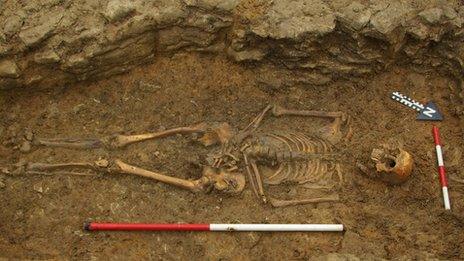Cirencester Roman tombstone may be to husband and wife
- Published
Watch the moment archaeologists lifted a Roman tombstone in Cirencester
A Roman tombstone, which is the first of its kind unearthed in the UK, may have belonged to a husband and wife.
The tombstone was found near skeletal remains thought to belong to the person named on its inscription, making the discovery unique.
Archaeologists behind the dig in Cirencester, Gloucestershire, initially believed it marked the grave of a 27-year-old woman called Bodicacia.
But a new theory is that it belonged to a man called Bodus and Cacia, a woman.
Skeletal remains, believed to be of a man were found beneath the headstone, with the skeletons of women found nearby.
Neil Holbrook, of Cotswold Archaeology, said: "There are a number of different theories at the moment from experts.
"The one of a male and female is interesting and we need to complete our analysis of looking at the bones and understand the inscription better."
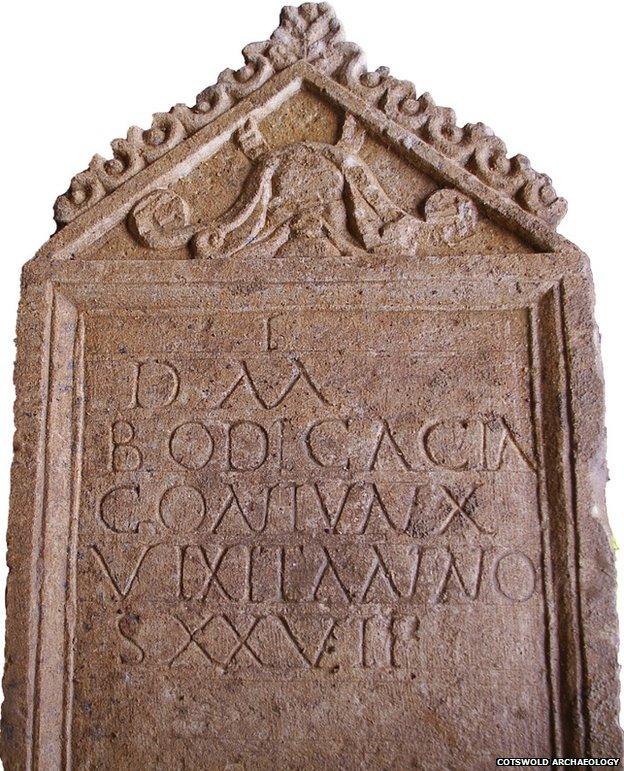
The tombstone had a Latin inscription as well as decorative carvings in the triangular pediment
The remains of three children were also found in the "family burial plot".
Mr Holbrook partially translated the Roman inscription on the tombstone, which he believes reads: "To the spirit of the departed Bodica [or Bodicacia], wife, lived for 27 years."
However, he said the inscription was carved by someone who probably could not spell or read, making a definitive translation difficult.
He added the interest the inscription has created throughout the world has been "quite extraordinary".
"It's a real puzzle - it's occupying some of the biggest brains of Latin epigraphy in Britain and throughout the world."
He said expert Dr Roger Tomlin, from Wolfson College, Oxford, has suggested the stone cutter had mixed up the word "Bodica" with the Roman dedication "sub ascia dedicatum" - meaning "dedicated under the shadow of the stone cutter's axe".
Oceanus tribute
The ornate carving at the top of the stone is thought to be a tribute to the Roman god Oceanus.
Mr Holbrook said: "The marine imagery is an allusion to the water voyage to the afterlife."
Amanda Hart, of the town's Corinium Museum, described the find as "amazing" and is hopeful the tombstone will go on display locally.
A total of 55 Roman graves have been found during the dig at St James Place.
A further 70 graves were discovered on the same site of the former Bridges Garage on Tetbury Road and a bronze cockerel figurine was found in 2011.
Cirencester, or Corinium as it was known, was the largest town in Roman Britain after London.
- Published25 February 2015
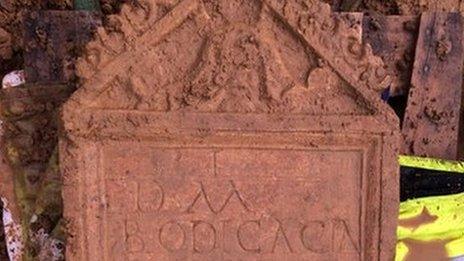
- Published6 October 2014
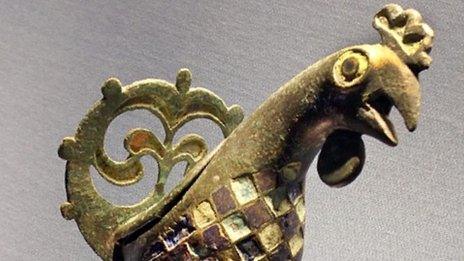
- Published31 July 2013
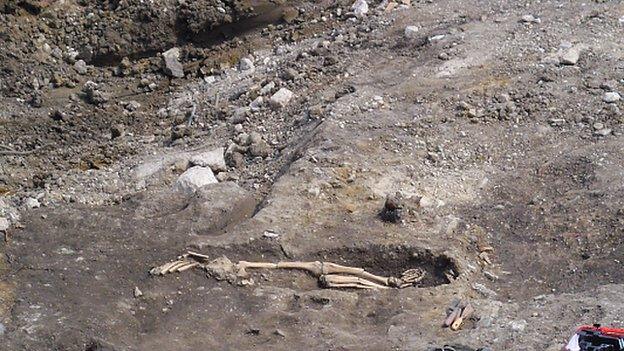
- Published12 March 2013
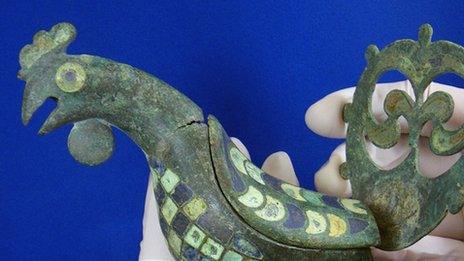
- Published16 December 2011

- Published17 November 2011
